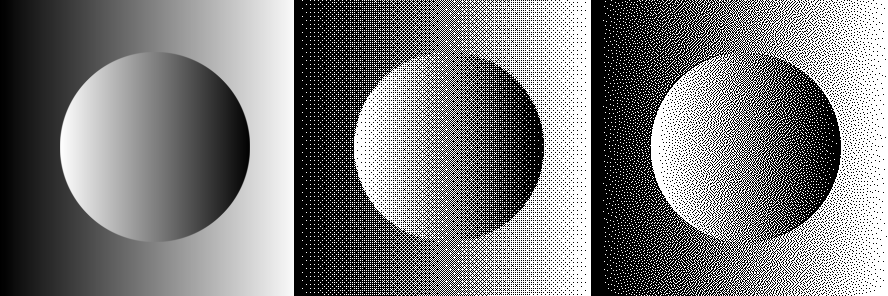Dithering (image editing)
The dithering (from english to dither [ 'dɪðə ] fluctuate,',, 'shake) is a technique in computer graphics to in images with reduced due to technical restrictions color depth , which must be reproduced illusion to produce a greater depth of color. Dithering is a type of dithering , it is also known as error diffusion .
In a dithered image, the missing colors are reproduced using a specific pixel arrangement from available colors, thereby avoiding hard transitions between the colors. The human eye perceives dithering as a mixture of the individual colors.
The most common use of dithering is for color reduction . The examples on the right show gradients with different numbers of colors. From a distance, the differences are barely noticeable.
Procedure
There are a number of different algorithms for dithering , which often also work with an error distribution. Any rounding errors or overflows are transferred to neighboring pixels in order to achieve a finer representation. Examples are:
- Floyd Steinberg
- Algorithm by Jarvis, Judice, and Ninke (1976)
- Stucki






